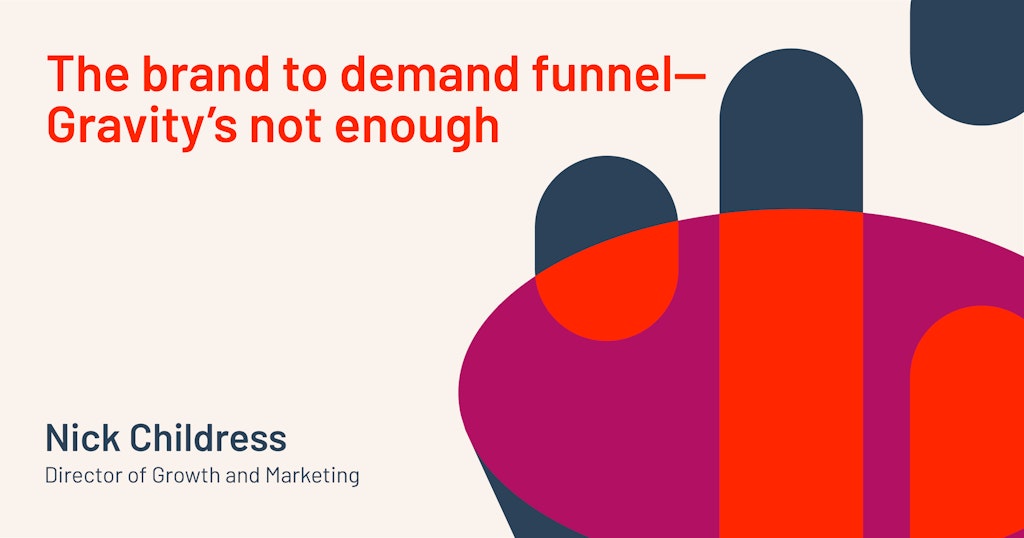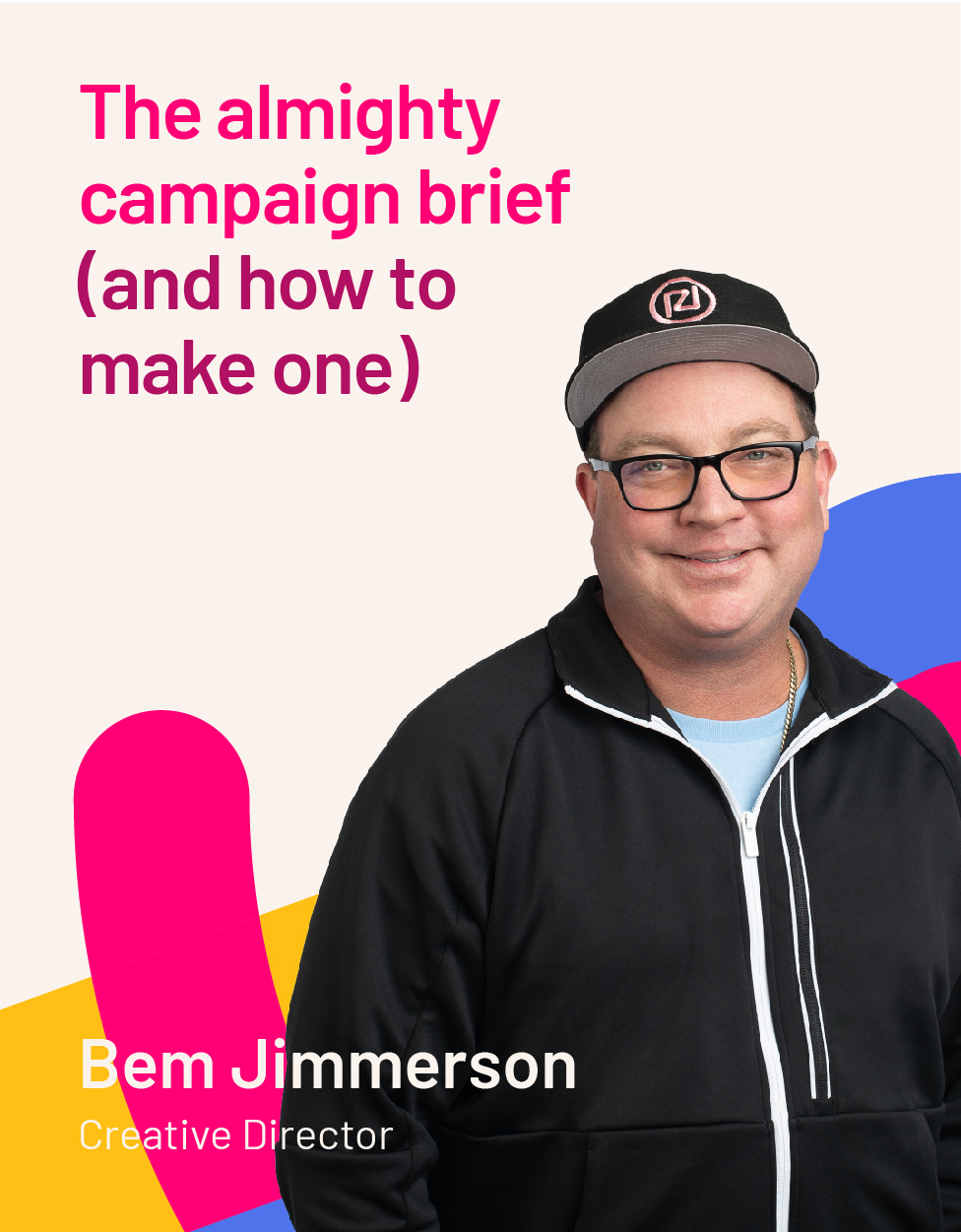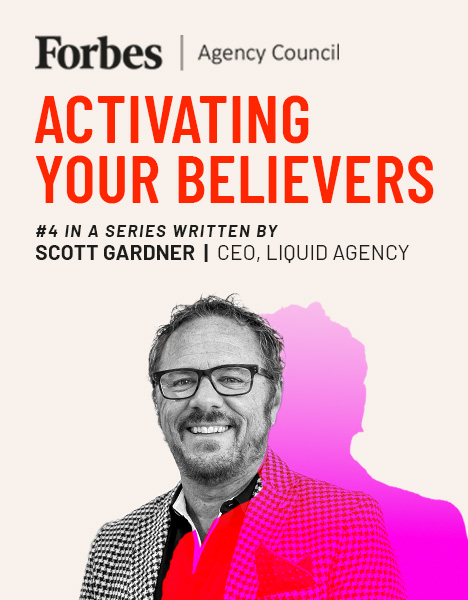Mastering the Brand to Demand Funnel & Solving Its Challenges – Gravity’s Not Enough

The brand to demand funnel is visually deceptive. Given everyone’s familiarity with the shape and how funnels work in real life, it’s easy to assume that once potential customers enter your funnel, they’ll continue progressing through it.
However, there’s no gravity in the brand to demand funnel universe that continually guides your audience to conversion—nor can brands count on an undiminished supply of prospects and customers entering it.
Instead, the force responsible for generating and capitalizing on steady brand to demand funnel throughput is consistent brand campaign investment and strategically aligning every touchpoint with dedicated and purposeful messaging that targets customers at various funnel stages accordingly.
Messaging matters
As examined in Les Binet and Peter Field’s well-known work, The Long and the Short of It, brand- and demand-focused campaigns generally prioritize different messaging and achieve different results.
The authors concluded from extensive data analysis that emotionally driven campaigns better support brands because of their ability to generate long-term relationships and business effects, whereas rational messaging better supports demand (or “activation”) and short-term sales growth. Interestingly, these results disprove the authors’ initial hypothesis and then-common industry perspectives.
Binet and Field’s analysis also demonstrated that short-term growth driven by rational campaigns doesn’t cumulatively result in long-term growth for brands and their customer relationships. Therefore, they assert that companies need to balance these messaging strategies when launching campaigns to benefit both long and short timelines.
Regarding the brand to demand funnel, this means that the emotionally driven brand campaigns help increase the number of customers entering the funnel but won’t necessarily drive more conversions. Likewise, rationally driven demand campaigns won’t raise awareness and interest in a brand. As a result, organizations need to develop a unified (brand) strategy overseeing the various campaign and messaging iterations to ensure they’re aligned despite different content targeting customers at different funnel stages.
The three-stage funnel: awareness, demand generation and lead conversion
Organizations typically understand the brand to demand funnel as having two stages, as indicated by the name. In this model, customers are separated by their brand awareness at the top of the funnel and their motivation to purchase toward the bottom.
And as Binet and Field’s work demonstrates, brands must “prime the pump” with emotional campaigns and then convert with rational ones. However, there’s an intermediary step missing in this understanding—particularly for highly considered purchases (e.g., B2B sales, expensive or long-term consumer purchases).
In the three-stage funnel, brand awareness remains a requisite top layer, but the demand portion is split into two separate phases: demand generation and lead conversion. This division is crucial because awareness doesn’t always lead to conversion when customers engage with rational and demand-focused campaigns.
Instead, customers generally need to be educated about a brand, its offerings and its differentiation from competitors before they consider making a purchase. Even compelling demand campaigns don’t necessarily answer audience questions like, “Why should I choose your brand over another?”
Purpose and messaging at each stage
Combining the three-stage funnel with Binet and Field’s conclusions on campaign messaging and outcomes helps determine which type of messaging is most crucial for customers at different stages of their buying journey:
- Brand awareness—This stage comprises ongoing efforts to grab audience attention, convey brand purpose and foster brand relationships via emotional messaging to achieve long-term brand belief. Building awareness and familiarity is paramount, as 86% of B2B buyers build “day one lists” from companies they know before starting their research, and 90% will make their final choice from that list. If your brand doesn’t make the shortlist, it’s unlikely customers will ever enter the funnel at all.
- Demand generation—This stage educates the audience on the brand, its offerings and differentiation from competitors. Messaging must be informative—rational but not “sales-y”—to accommodate customers’ preferences and buying committees’ need for self-guided digital exploration at this stage. B2B buyers don’t engage with sales reps for 83% of their buyer journey, so brands must make their educational, demand-generating content easily available, accessible and navigable.
- Capturing or converting leads—This stage must present a rational and value-driven argument for why customers should not only choose a given brand and its offerings but provide their contact information or reach out to sales staff to begin discussing purchases. Lead capture and conversion depends on the audience becoming aware of and familiar with the brand before understanding the value on offer. People today understand the value of their information and don’t offer it for nothing.
Brands can improve funnel throughput by tracking different metrics specific to each stage and optimizing their campaigns, messaging and educational content accordingly. For example, brand tracking (e.g., statistically analyzed survey responses) will help organizations understand the audience’s brand awareness, familiarity and relationship. Similarly, real-time metrics like page dwell time will help organizations monitor the impact of educational content aimed at demand generation.
Investing in each stage
A unified brand strategy that oversees these different types of campaigns must maintain consistent investment for each. Otherwise, the funnel suffers from too little input or too few choke points that restrict progression toward conversion.
However, many brands will commonly under-prioritize brand awareness investment and over-prioritize lead capture or conversion. This results in brands underperforming in both aspects because there’s not enough brand awareness or familiarity for customers to investigate (e.g., left off “day one lists”) nor enough educational demand generation for them to seriously consider purchasing.
Understanding and overcoming funnel challenges
Typically, organizations will face four common challenges with their funnels:
- Not enough funnel input—This occurs when brands haven’t achieved sufficient awareness or familiarity. Investment in brand tracking to determine and improve baseline customer relationships and evaluating brand strategy (e.g., brand believers and target audiences, messaging, beneficial channels) will help widen the funnel to create more and better input.
- Not enough funnel progression—This occurs when brands underinvest in demand generation that helps move consumers from awareness to familiarity. Similarly, brands can suffer from this challenge even with high-quality educational campaigns and messaging if prospective buyers can’t find the content during their self-guided digital exploration (e.g., poor website navigation) or encounter an overuse of lead capture and similar forms gating access.
- Not enough lead capture or conversion—This occurs following underinvestment or underperformance in the funnel’s first two stages—especially when educational content is gated behind lead capture forms and customers haven’t been presented with enough value. Customers won’t reach the final stage if the funnel and different campaigns aren’t designed to escort them there.
- Organization misalignment—Different departments or teams may be responsible for creating campaign content and launching campaigns that target customers at different funnel stages. And they may be siloed and operate independently. So, despite the messaging and purpose differences between these campaigns, if there isn’t an overarching alignment, customers may become confused as to what the brand represents and the value it offers.
Full-funnel alignment for brands
Brands must develop an overarching strategy for awareness, demand generation and lead capture for conversion campaigns to ensure they’re aligned, appropriately target customers at different stages of the buying journey with apt messaging and keep them progressing through the funnel. And they must also sufficiently invest in these different media campaigns or they’ll inadvertently introduce chokepoints preventing that customer progression.
Sources:
Les Binet and Peter Field. The Long and the Short of It.
Harvard Business Review. What B2Bs Need to Know About Their Buyers.
Gartner. Future of Sales 2025: Deliver the Digital Options B2B Buyers Demand.

